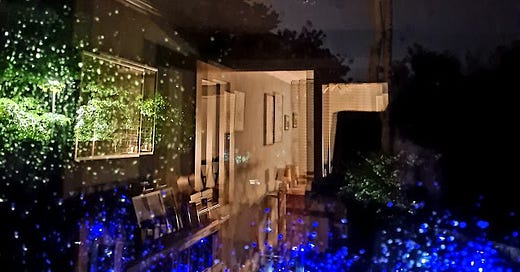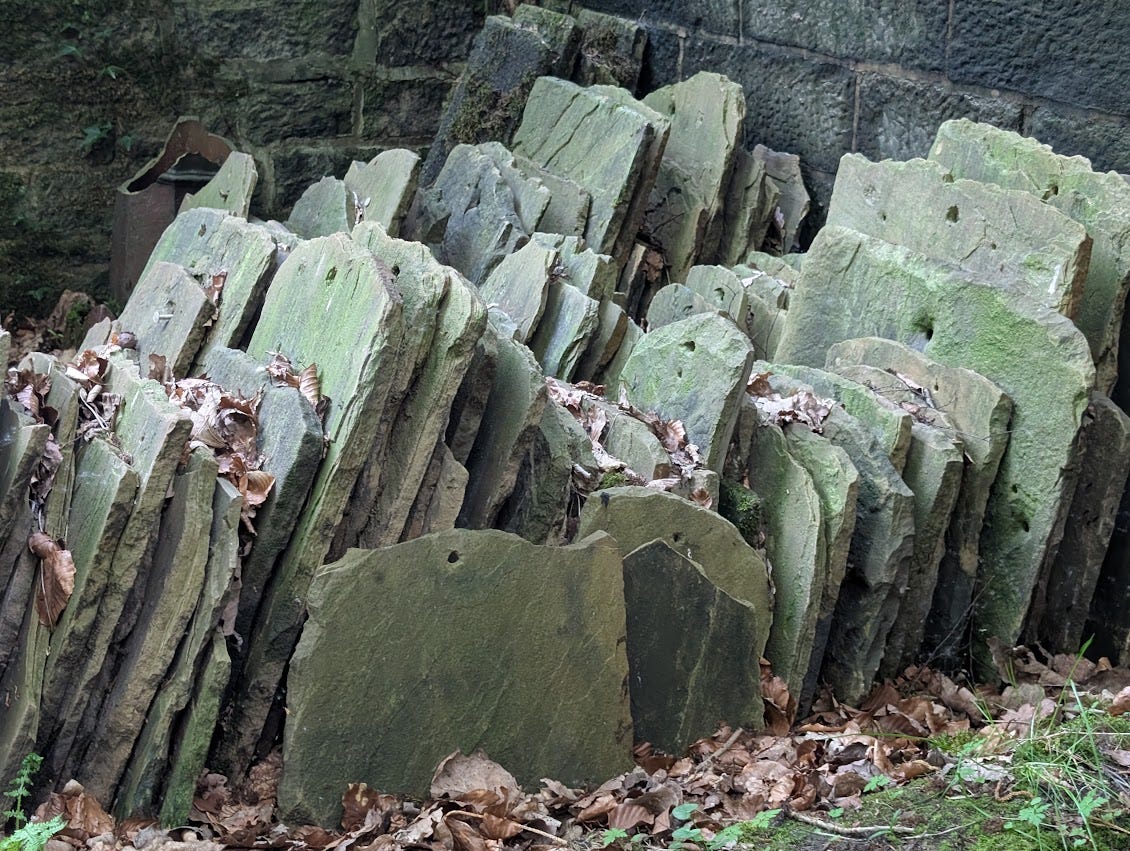So, we come to the archives like lovers, with hope and high expectations. We wish each archival collection never to have closing hours. We wish it to be infinite so we might never lose our sense of wonder. At the same time, we wish it to be finite so we might find the morsel of evidence we seek, the definitive document to bolster some thesis we formed too early: the meaning of this particular history is____ and my visit to the archive will offer up proof that___.
But our wishes go mostly ungranted. Our chosen archive does have closing hours. It may feel infinite, especially when closing time arrives and we have not completed our searches. But we know otherwise. The archive – despite being too vast and complex to yield its secrets in our lifetime - is also frustratingly finite and unfinished. Even if during one’s lifetime, every piece of its evidence could be viewed, we would remain troubled by the possibility of other evidence out there beyond the archive, as yet undiscovered and uncollected or worse yet, neglected or denied its place in history.
We publish our work, having made our case. But someone will come along later and, as they should, question or re-interpret it. Either way, there is no last word. To paraphrase Orson Welles, if we want a happy ending, that depends on where we stop the story. And as every historian knows, choosing where to stop the story is a risky business. We write our endings in the knowledge that there is no end. This applies not only to the possible emergence of new evidence concerning our particular topic but to history itself. Each one of our working hours is turning itself into the past behind us, piling up even as we write our conclusions. It is behind us, yes, a growing mound, but we are also in it, in this ever-unfolding history, the “Great Story” of “Everything” that can never end:
“At the centre of the written history lies this recognition of temporariness and impermanence. And all historians, even the most purblind empiricists, recognise this in their acts of writing: they are telling the only story that has no end… historians want ends, quite as much as anybody else. They, though, are the only narrators who cannot have what they want.”[1]
The finite/infinite and endings/end contradictions are further deepened by problems of narrative and interpretation: how to read and recount historical evidence. Bias. Selection. Gaps. Silences. The person and social positioning of the historian. The changing political culture in which the archive is administered and within which we read our sources and produce our essays/books. The meaning and status of Truth with a capital T. Time and place. Power.
Truth, power, and the archive
“During the twenties, so a story goes, Clemenceau, shortly before his death, found himself engaged in a friendly talk with a representative of the Weimar Republic on the question of guilt for the outbreak of the First World War. ‘What, in your opinion,’ Clemenceau was asked, will future historians think of this troublesome and controversial issue?’ He replied ‘This I don’t know. But I know for certain that they will not say Belgium invaded Germany.’”[2]
Hannah Arendt recounts this story in her 1967 essay “Truth and Politics,” an examination of the relations between truth, lies, fact, opinion, and power, one that has gained new relevance in the era some now describe as ‘post-truth’. Although she does not contend that historians or archivists alone have the power to alter received truths about the past, she does imagine the possibility of such alteration occurring:
“It is true, considerably more than the whims of historians would be needed to eliminate from the record the fact that on the night of August 4, 1914, German troops crossed the frontier of Belgium; it would require no less than a power monopoly over the entire civilized world. But such a power monopoly is far from being inconceivable, and it is not difficult to imagine what the fate of factual truth would be if power interests, national or social, had the last say in these matters.”[3]
These days, we haven’t far to look for examples of the strained relations between fact, fiction, and power. Historians, I contend, are relatively well-equipped for this, even as (or precisely because) it worries us as much as anyone else. This is partly because we bear regular witness to the vagaries and unreliability of evidence; we have also documented and analyzed the capacity of historical actors to lie to themselves and others. We struggle with our own ‘truths.’ Additionally, our study of the past tends to make the present less shocking. Finally, we cannot study history and remain unaware of the workings of power.
So, in truth, the status of truth has always been worrying. If Derrida’s theory of the archive privileged a psychoanalytical reading, it also attended to matters of political power by reminding us of the Greek origins of the term. As the residence of the archon (magistrate), the archeion was where all official documents were filed. In the beginning, therefore, the archive was located at the seat of the law, at the legal source and legitimation of political power:
“There is no political power without control of the archive, if not of memory. Effective democratization can always be measured by this essential criterion: the participation in and access to the archive, its constitution, and its interpretation.”[4]
Our mal d’archive, then, is not only a feverish search for origins, but it is implicated in the legitimation and maintenance, or contestation, of power. Only the most naïve of historians, even before the postmodern turn, would have staked her reputation on the absolute/enduring truth of all archives and the written histories derived from them.
Arendt’s Clemenceau example is a stark reminder that historical truth is precarious and politically urgent. What we can say in one time/place, we cannot assume will remain ‘sayable’ in another. The same precariousness applies to archives. Perhaps few working historians saw this more clearly than Michel Foucault who theorized the archive as a discursive practice, as the “law of what can be said” in any given time/place/situation:
“[By archive] I do not mean the sum of all the texts that a culture has kept upon its person as documents attesting to its own past, or as evidence of a continuing identity; nor do I mean the institutions, which, in a given society, make it possible to record and preserve those discourses that one wishes to remember and keep in circulation… The archive is first the law of what can be said… It does not have the weight of tradition; and it does not constitute the library of all libraries, outside time and place… [rather] it reveals the rules of a practice that enables statements both to survive and to undergo regular modification.”[5]
Yet the archive, historical witnessing, our research practices, how we present our findings, the nature of historical writing, narratives, and truths – all of these would soon come under greater pressure than ever before. By 2003, Robert Darnton would sum up the historian’s postmodern predicament as follows:
“Hard facts have gone soft: there is no denying it, no matter where you took a stand during the last few decades while the waves of relativism swept over the intellectual landscape. Historians may still favour metaphors, such as digging in the archives, but who believes in quarrying out nuggets of reality? Words such as ‘facts’ and ‘truth’ make us uncomfortable and stir the urge to make us run for protective covering.”[6]
In the early 1990s, I returned to university to pursue a doctorate in what can best be described as a cultural history of postwar American suburbanization. By then, postmodern theory and post-structuralism/deconstruction were impacting all the major disciplines: philosophy, sociology, literature, and more. And of course, history. Having trained in social history, this was an unsettling experience at times. My fellow Ph.D. candidates were not social historians. A few were art historians; others had trained in literature, philosophy, or Cultural Studies. In our seminar exchanges, I witnessed the casual innocence with which some of them disregarded standard conceptions of historical evidence.
At the same time, I knew these were good challenges for any historian, no matter how we choose to manage them in the long run. And in retrospect, none of it was all that surprising. Perhaps postmodernism merely confirmed what historians have always known, but sometimes forget. The past is gone. History – the discipline - is not the past. It is a representation of the past. And representation is always unstable. In other words, postmodernism didn’t tell historians something new; it reminded us of something old:
“… it is, in fact, the historian who makes the stuff of the past (Everything) into a structure or event, a happening or a thing, through the activities of thought and writing… We should be entirely unsurprised that deconstruction made no difference to this kind of writing. The search for the historian’s nostalgia for origins and original referents cannot be performed, because there is actually nothing there: she is not looking for anything: only silence, the space shaped by what once was; and now is no more.”[7]
Here (after drawing on Hayden White, Louis Mink, David Carr, and Paul Ricoeur), Carolyn Steedman takes on deconstruction directly, suggesting that in essence, the writing of history has always been ‘deconstructionist’ insofar as final meaning is always deferred. And this is for all the reasons we have already noted - not only that the writing of history is a representation but that archives are simultaneously finite and infinite, continuously altered by new evidence, by the positioning of archivists/historians/readers, practices of memory, our private nostalgias, by theories/practices of narrative, and by larger social and political change. And here, we might wish for greater collaboration between historians and artists, for of late, it is the latter who are reclaiming the archive in all its personal and political urgency, redefining it and creating archival possibilities for lives and narratives most often excluded. See, for example, Barbara Steveni’s I Am an Archive* or Yoko Ono’s Add Colour (Refugee Boat).**
For those of us still in need of traditional archives for our research (whether personal or political), we are continually shaped and tossed by history (the gathering past) itself. Evidence gives rise to and demands more evidence, even as it reveals gaps and silences. Writing leads to more writing; History leads to more history. Ricoeur told us that “every historical explanation is looking for an explanation to incorporate into itself because it has failed to explain itself.”[8] As early as 1985, Dominick LaCapra warned us about what he called “the archive as fetish” acting as a “literal substitute for the ‘reality’ of the past which is ‘always already’ lost for the historian.”[9]
So, do we still long for the supposed neutrality and innocence of archives? Do we believe in archival plenitude, a promise to yield the evidence we seek? Yes, I suppose we do. We believe, but we hear the tiny patter of doubts in the back of our minds. Take the ostensibly simple example of evidence in the form of numbers and statistics. How often have we heard the line, “Numbers don’t lie?” Yet who does the counting? Who determines what/whom must be counted and what/whom does not matter? In whose interest were numbers gathered? As for archival neutrality or ‘innocence’, look no further than the way archives were used by the Nazis to identify Jews. Or consider imperial archives, nearly always a valorization of the colonizer with little to no knowledge of the colonized.[10] Plenitude or completeness? Forget about it. The omissions of so many histories (think race, class, gender, sexuality, age, colonization) can never be fully repaired, though we can acknowledge them and seek a critical truth, a ‘best truth possible’ given the omissions and flaws. Here, we might recall Foucault’s validation of “subjugated knowledges” – historical knowledge that has been “disguised” or “disqualified” by what he calls “the tyranny of globalising discourses with their hierarchy and all their privileges…” For Foucault, this concerns a popular memory of struggles against disqualification, an “insurrection of subjugated knowledges.[11] And here again, artists have much to tell us.
Of course, we know already that the best archives (and archivists) are those working to acknowledge and address such issues as transparently and thoroughly as possible. For we cannot do without archives. They are important. They do hold material remains of the past. They do deliver. Our work will be judged for its archival integrity – for our critical use of archival evidence and silences. So, despite the flaws and challenges, we return again and again, ever hopeful and sometimes rewarded. Harriet Bradley notes that the archive:
“even in an age of postmodern skepticism… continues to hold its alluring seductions and intoxications. There is the promise (or illusion?) that all time lost can become time regained. In the archive, there lingers an assurance of concreteness, objectivity, recovery and wholeness.”[12]
I am reminded of an old Wim Wenders film, an adaptation of the Peter Handke novel evocatively titled The Goalie’s Anxiety at the Penalty Kick. You only need to have watched one penalty shoot-out to grasp the idea. But in truth, it is both goalkeeper and penalty taker who must endure that moment of angst. Each visit to the archives – and this applies every bit as much to our private memories and archives as to our public ones - is rather like taking (and receiving) a penalty kick. I surely know the historian’s anxiety at the archive gates. But it’s good anxiety. It should not keep us away.
Arendt’s essay on truth and politics can now be read as an anticipation of how the practice of history and our grasp of the present would be challenged and ultimately strengthened by critical theory. History now faces a more destructive challenge in the return of authoritarian impulses, politics, and regimes in our lifetimes. A Holocaust refugee, Arendt adhered to the critical importance of seeking and defending historical truth, to the ‘fate’ of truth, as she put it. And so should we. Otherwise, we may soon wake up to find that Belgium invaded Germany.
*Artist Barbara Steveni talks about her work, her archive and the work of the Artist Placement Group. “Art360 is a major action research project by DACS Foundation (now Art360 Foundation) that offers support to develop and sustain the archives of 100 leading modern and contemporary British artists, offering participants expert and bespoke legacy consultancy. Filmed and edited by David Bickerstaff.”
**See Jessica Stewart, “Yoko Ono’s Refugee Boat Invites Visitors to Participate and Spreads a Powerful Message of Hope. My Modern Met: May 13, 2024.
[1] Steedman, Carolyn. 2001. Dust. Manchester: Manchester University Press. 148 & 149.
[2]Arendt, Hannah. February, 1967.“Truth and Politics.” The New Yorker, 49-88. 52.
[3] Ibid. 52.
[4] Derrida, Jacques. 1996. ARCHIVE FEVER : A Freudian Impression. University Of Chicago Press. 4, note1.
[5] Foucault, Michel. 1972. The Archaeology of Knowledge. Tavistock Publications Ltd. 128-9 & 130.
[6] Darnton, Robert. 2003, “How Historians Play God,” European Review, 11(3), 267–280. 267.
[7]Steedman, Carolyn. 2001. Dust. Manchester: Manchester University Press. 154.
[8] Ricoeur, Paul. 1983. Time and Narrative, University of Chicago Press, 154-5.
[9] LaCapra, Dominick LaCapra. 1985. History & Criticism. Cornell University Press. 92, note 17.
[10] See, for example, the groundbreaking essay by Gayatri Chakravorty Spivak, “Can the Subaltern Speak?” in Cary Nelson and Lawrence Grossberg, eds. Marxism and the Interpretation of Culture, MacMillan (1988): 271-313.
[11] See Foucault’s hugely influential “Two Lectures” in Colin Gordon ed. Power/Knowledge, Harvester Wheatsheaf (1980): 78-108. For more recent and specific examples of archival challenges, see Manoff, Marlene. 2004. “Theories of the Archive from across the Disciplines.” Portal: Libraries and the Academy 4 (1): 9–25.
[12] Bradley, Harriet. 1993. “The Seductions of the Archive: Voices Lost and Found,” History of the Human Sciences. 12(2). 118.









